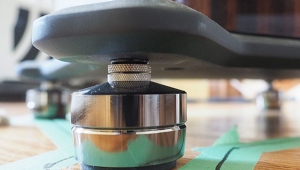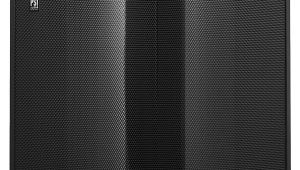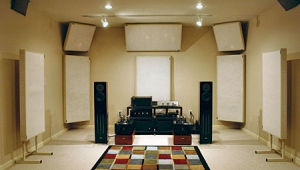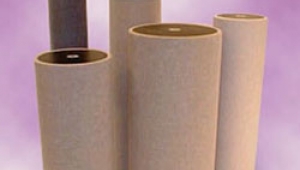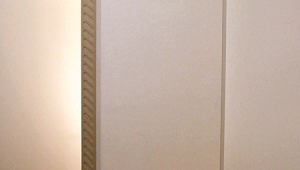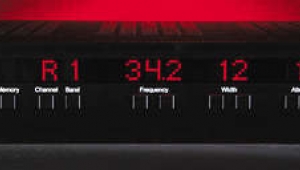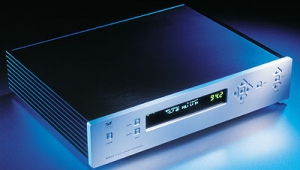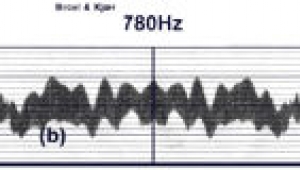| Columns Retired Columns & Blogs |
TacT Audio RCS 2.0 digital equalizer/preamplifier Measurements part 2
Confirming the excellent resolution and dynamic range seen in fig.3, the RCS 2.0's DAC linearity error was less than 1dB down to below -110dBFS (fig.5), which is superb. As a result, the TacT's reproduction of an undithered 1kHz sinewave at -90.31dBFS was effectively perfect (fig.6), while increasing the bit depth to 24 bits gave a reasonable facsimile of a sinewave (fig.7), even at this very low level.

Fig.5 TacT RCS 2.0 D/A module, departure from linearity, 16-bit data (2dB/vertical div., right channel dashed).

Fig.6 TacT RCS 2.0 D/A module, waveform of undithered 1kHz sinewave at -90.31dBFS, 16-bit data.

Fig.7 TacT RCS 2.0 D/A module, waveform of undithered 1kHz sinewave at -90.31dBFS, 24-bit data.
With the volume control set to unity gain ("93.9"), harmonic distortion levels were vanishingly low as long as the signal level was below 0dBFS. At -0.05dBFS into 100k ohms, for example (fig.8), the third harmonic lay at -96dBFS (0.0015%). But increasing the digital data level to exactly 0dBFS introduced a regular series of odd harmonics at -80dBFS (not shown), implying the onset of digital-domain clipping. Fig.8 was taken from the balanced output; the second harmonic rose by around 3dB from the single-ended outputs. The distortion remained negligible into the punishing 600 ohm load, however, as it did with the high-frequency intermodulation test signal into either load (fig.9).

Fig.8 TacT RCS 2.0 D/A module, balanced output, spectrum of 50Hz sinewave, DC-1kHz, at -0.05dBFS into 100k ohms (linear frequency scale).

Fig.9 TacT RCS 2.0 D/A module, HF intermodulation spectrum, DC-24kHz, 19+20kHz at 0dBFS into 100k ohms (linear frequency scale).
Only when I measured word-clock jitter did the TacT processor stumble, and then only very slightly. Fig.10 shows a high-resolution spectrum of the RCS 2.0's noise floor for 3.5kHz to either side of a high-level 11.025kHz tone. The undithered datastream used to derive this graph includes a 220Hz squarewave that involves the data toggling between 0 (digital black) and -1 LSB—very much a worst case for the generation of jitter. The TacT dealt with this very well, the only significant data-related sidebands present in fig.10 lying at ±229Hz (red "2" markers). The peak-peak jitter level was a very low 146.3 picoseconds, and the analog noise floor mostly lies below the -130dBFS floor of this graph. But note the large number of noise spikes (blue numeric markers); not a clean floor at all. I wonder if this behavior correlates with KR finding the TacT's DAC to sound "barely less smooth throughout the mid- to high-frequency audio spectrum" when he compared it to the No.360.

Fig.10 TacT RCS 2.0 D/A module, high-resolution jitter spectrum of analog output signal, with PS Lambda CD transport connected via 6' Apature S/PDIF cable (11.025kHz at -6dBFS with LSB toggled at 229Hz). Center frequency of trace, 11.025kHz; frequency range, ±3.5kHz.
- Log in or register to post comments
